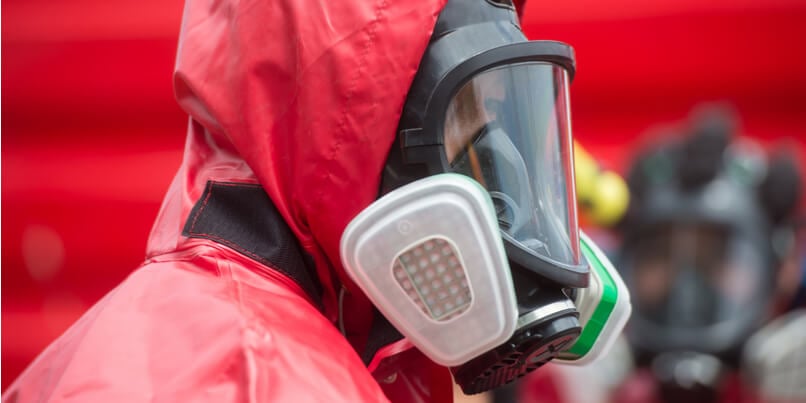 Historically, chemical warfare agent (CWA) training involved the use of simulants which were dispersed manually.
Historically, chemical warfare agent (CWA) training involved the use of simulants which were dispersed manually.
But new generations of intelligent, computer-based simulation tools offer a real, workable alternative.
HazMat simulation training can accurately replicate how real devices react when confronted by a range of chemical agents, taking into account the volatility of the substances, the prevailing meteorological conditions and the differing detection tactics and techniques used.
In this blog post, we explore advances in detection technology and how developments in simulation training are reducing the probability of a false positive being interpreted as a threat.
Advances in detection technology
Ten years ago chemical warfare detection tended to consist of determining if Blister agent (H) or Nerve agent (G) was present. Some detectors also had the capability of detecting a few additional agents. But by and large, the relatively limited detection capability was dictated by the perceived threat at the time. And this drove the market for detectors.
In many instances, users would only have one type of detector available, usually ion mobility spectrometry (IMS) or Flame Photometry. This meant the ability to identify substance threats was generally restricted to “man-portable” or vehicle-mounted gas chromatograph/mass spectrometers (GC/MS).
IMS technology and the associated processing software has advanced to enhance substance detection. However, the need to reduce the probability of a false positive being interpreted as a threat has led many agencies to employ more than one detector technology. Quite often this is a mix of IMS and Flame Photometry, each incorporated within different instruments.
Developments in simulation training
As detection technology has advanced, so too has simulation training. The main driver for using simulators is to be able to replicate the ability to detect and monitor a near invisible or invisible hazard as it moves through the air or contaminates equipment, infrastructure or terrain.
The greatest challenge is ensuring that the hazard equipment is accurately portrayed so that no false lessons are learned. To mitigate this risk, manufacturers have developed simulators with built-in after action review (AAR) capability. This allows trainers to determine if it was operated correctly.
Take for example the Proengin AP2C detector. This uses Flame Photometry and primarily detects the presence of sulphur and phosphorus. A lookalike simulation detector can indicate a reading on a simulation stimulus that represents one of these substances.
Then there is the Smiths Detection CAM or LCD / JCAD series detector. This uses IMS and can be configured to provide an indication in either the H or G mode whenever an appropriate simulation stimulus is received.
An electronic simulation vapour generator can be set to represent a specific substance, for example, the nerve agent Sarin. The AP2C simulator would provide an indication in the P channel that a nerve agent might be present, and a CAM / LCD would provide an indication in the G channel, also indicating that a nerve agent might be present. In this case, a student would deduce that there is a very high likelihood of a nerve agent being present.
We can apply the same principle to the Blister agent detection channels. If the simulation source represents a blister agent, the appropriate readings would be obtained on the AP2C simulator S channel and the CAM / LCD simulator H channel.
However, the last thing you want is for a student to fall into the trap of assuming that if a CAM / LCD obtains a reading in H mode but an AP2C does not obtain a reading in the S channel, that the CAM / LCD is responding to a false positive.
The introduction of a simulator capable of detecting specific substances would reveal all and bring home a useful lesson. Using a RAID-M100 or LCD 3.3 simulator in these scenarios would produce useful agent identification details and enhance the effectiveness of the training.
CWA training used to be confined to specialist training areas, generally on a military base. Nowadays the primary reason for CWA training is for terrorist-related threats, which are more than likely to happen in a civilian area. This makes Live-Agent Training (LAT) difficult.
Simulation training offers the opportunity to handle life-like detectors and to interpret readings in a realistic setting, and this is invaluable for learning.
To maximise training effectiveness, manufacturers are investing heavily in developing detectors comprised of hybrid technologies to both reduce false positives and enhance substance detection capability.






